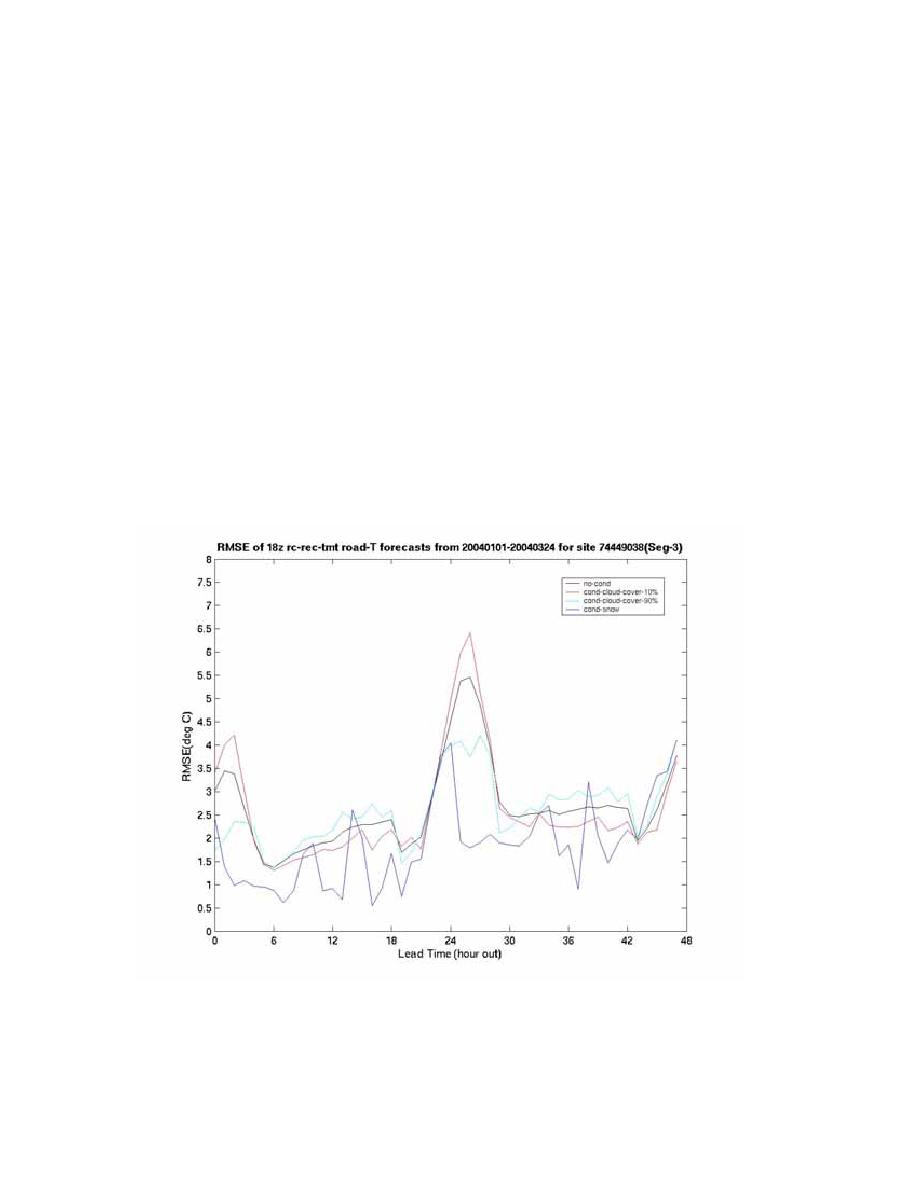
To assess the importance of cloud cover and snowfall on road temperature forecasts,
RMSE and bias were calculated for times when the Ames, Iowa METAR site (KAMW)
reported: a) sky cover was <10% (clear skies), b) sky cover was >90% (overcast skies), c)
snow was falling, and d) any conditions (Fig. 11.14). Observed and forecast road
temperatures were for highway segment #3, which is a portion of I-35 located close to
KAMW. Overall, road temperature forecasts had the lowest RMSE for a given forecast
length when snow was occurring. Daytime road temperature forecasts were far better
when conditions were overcast, rather than clear. At night, however, this trend was
reversed, though more weakly. The daytime improvement is likely due to the removal of
a strong cold bias that is present when clear skies are observed (Fig. 11.15). A weaker,
clear sky cold bias was still present at night. A stronger nighttime cold bias was found
when skies were cloudy. This was likely due to under-prediction of cloud cover on
cloudy nights, allowing more radiational cooling. Under-prediction of cloud cover
during cloudy daytime periods may partially account for the warm bias with that
combination of conditions. Biases during snowy periods showed similar, but weaker
diurnal trends, compared to those found with cloudy skies. This was likely due to
dampening of shortwave and longwave effects by the deeper, snow producing clouds
above. The relatively good quality of road temperature predictions during snowfall is
encouraging, however, given the purpose of the MDSS/RWFS.
Fig. 11.14. Season analysis of RMSE for road temperature forecasts for all sky
conditions (black line), sky cover <10% (clear skies, red line), sky cover >90% (overcast
skies, green line), and when snow was falling (blue line).
114



 Previous Page
Previous Page
